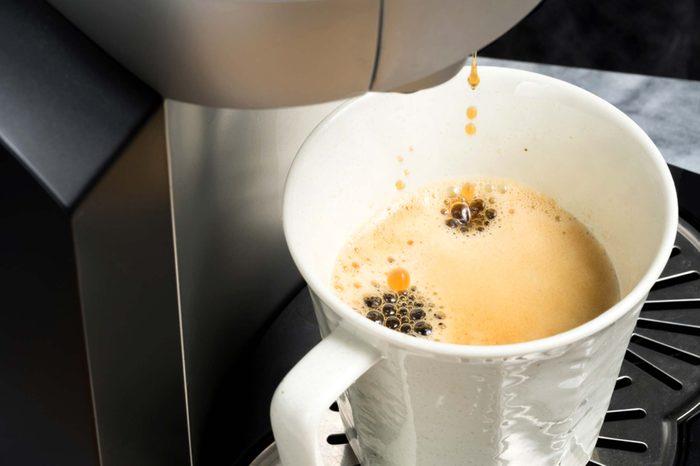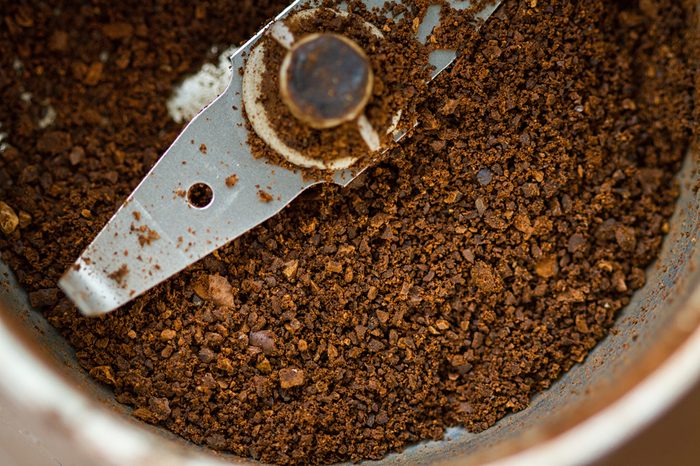
You’re using a sub-par grinder
Coffee grinders come in two styles: burr and blade. Blade grinders work like mini food processors: its blade whacks the beans over and over until they’re chopped finely. “Usually the user has to time the grind, shake the grinder periodically to distribute the beans, and visually inspect the coffee to see if it’s reached the desired consistency,” says Lauren Savoie, senior editor with America’s Test Kitchen. Burr grinders, by contrast, do all of the work for you and have less chance for user error. “A burr grinder is like a pepper mill; it has two sets of gear-like pieces called burrs that spin against each other to grind the coffee. You put whole beans in the top, select your desired grind size, turn the machine on, and perfectly ground beans come out the bottom,” Savoie says. “If your goal is a consistent cup of coffee, you absolutely want a burr grinder,” Savoie says.
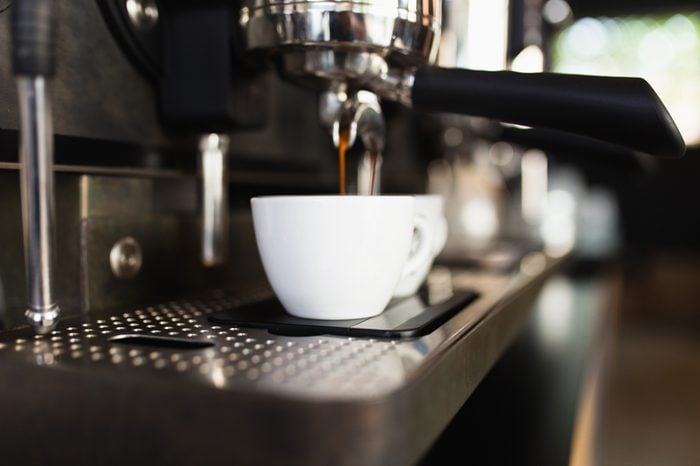
You don’t clean your machine well
“The pot isn’t usually the culprit if your coffee is tasting funky,” says Savoie. “It’s usually all the unseen inner parts of the machine that never get washed or cleaned.” Even if you regularly wash the pot and grounds basket, you’re missing a major component; Savoie says many people do not know that they need to descale their drip coffee machine, “but it’s the key to the health of your machine and the taste of your coffee,” she adds. That’s because your tap water is filled with minerals—calcium, magnesium, limestone—and over time, they can build up in the inner workings of your coffee machine. They not only make your coffee taste off, they can also ruin your machine. “Some machines have lights that tell you if a descale is needed, but a quick descale twice a year is a pretty safe bet for most coffee makers,” Savoie says.
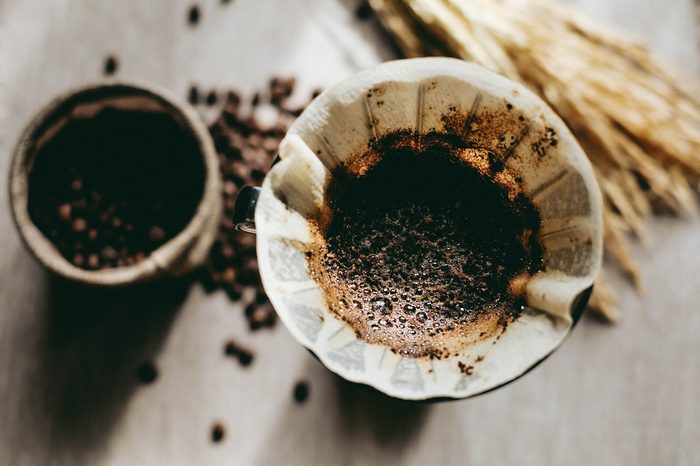
You leave wet grounds in the machine too long
As soon as your pot has finished brewing, lift the lid, then toss or rinse the filter and spent grounds. “Always clean out the wet coffee grinds as soon as you’re done brewing,” says Dan Scalco, creator of Food Box HQ. “The warm or damp conditions create a prime environment for mold and bacteria to collect.” That translates to bacteria-laden coffee the next day, which could taste funny—or worse, make you sick.
You use that handy morning auto-brew function
While it may seem convenient to wake up to freshly brewed coffee, your java will be lose a ton of flavor. Ground coffee starts to lose its aroma and flavor in a matter of minutes, Scalco says, so the few hours your beans will sit from the evening when you grind them to when your machine brews them the next morning may take all the delicious flavor out of the coffee.
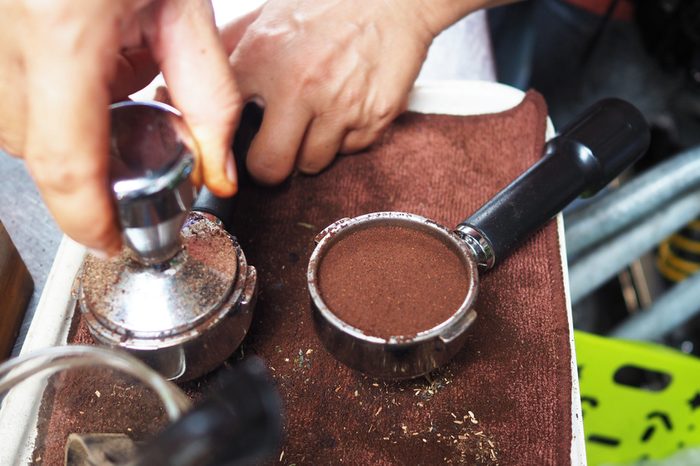
You aren’t weighing your beans (or grounds)
“Good coffee is all about using the right proportion of coffee to water,” says Jessica Easto, author of Craft Coffee: A Manual. “Try a ratio between 1:15 and 1:17—that’s one part coffee to 15 to 17 parts water—depending on your preference for stronger or weaker coffee.” If you weigh your coffee and water in grams, it makes the ratio measurements really easy, Easto shares. (A gram scale goes for around $10.) Do you have to break out your scale every morning? No, says Savoie. “But if consistency or a barista-level brew is your thing, you definitely need the right tools.” Plus, if you know just how you like your coffee, it’s the most accurate way to repeat your results.
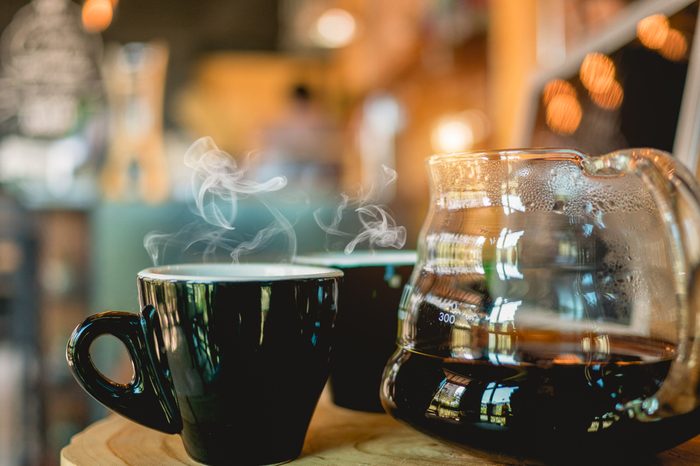
You’re making a too-small batch
Don’t make a single cup of coffee in a machine that’s not designed for small brews. “Automatic drip coffee makers are designed to brew at least two to three cups at once,” says Dorian Bodnariuc, a former barista and blogger at Coffee Brewing Methods. “When you make a single cup, the grounds don’t get properly saturated with water, and the coffee is too weak.” You could use more coffee ground to compensate, he says, “but that is just wasteful, and the taste is not that good either.” Find out 11 ways to make your coffee habit healthier.
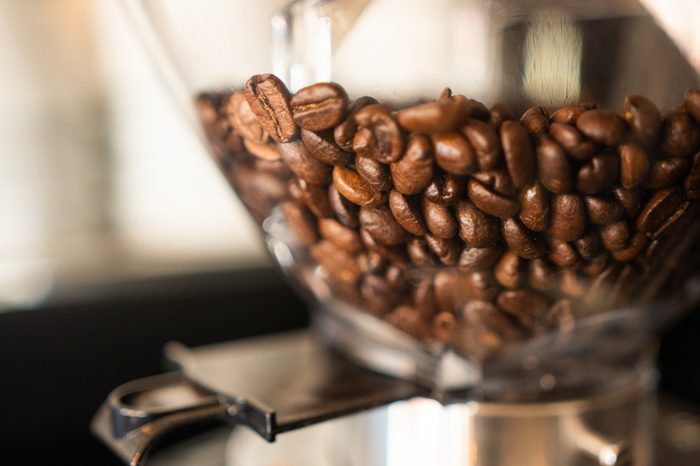
You’re starting with bad beans
With an automatic machine, you don’t have control over two big components of coffee making: the temperature and time, Easto says. “That means you only have control over one thing: the beans.” She suggests you splurge a bit and buy fresh, high-quality whole beans. “Skip the grocery store aisle, where most beans tend to be older, and head to your local craft coffee roaster or shop,” she says. Easto suggests you look for beans that have a roast date, not a best-by date, and buy as close to that date as you can. “Only buy as much as you think you’ll use in about a week,” she says.
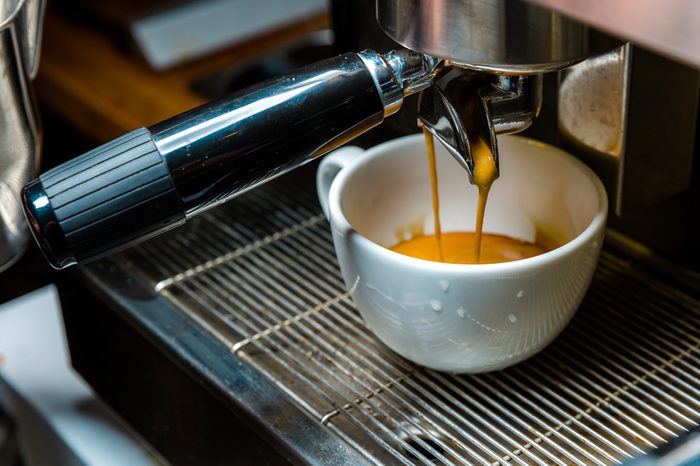
You hit pause while your java brews
Resist the urge to stop the brewing process and pour up a premature cup of coffee; the flavor for your first and subsequent cups will thank you. “If you grab a cup while the coffee is still brewing, your cup will be way too strong and what’s left in the pot will be too weak,” Bodnariuc says. That’s because the first half of the pot is always the strongest, then as the brewing goes on, there are less soluble solids to dissolve in the dripping water, so coffee is weaker. “On average, the pot has the perfect strength and concentration once it’s fully brewed,” Bodnariuc says. Here are 7 things that happen to your body when you drink coffee every day.
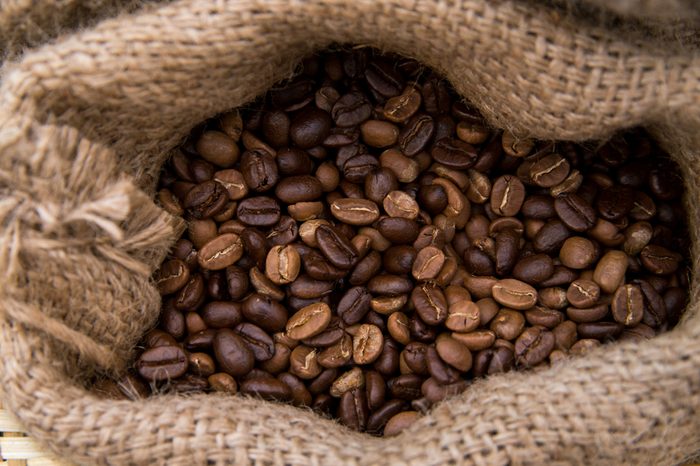
You use old beans
Like any baked good or bottle of wine, coffee beans turn stale and lose flavor if they sit in your pantry or bread box for too long. “Use freshly-roasted coffee within two weeks of its roast date,” says Al Liu, vice president of coffee at Colectivo, an independently-owned coffee roaster in Milwaukee.
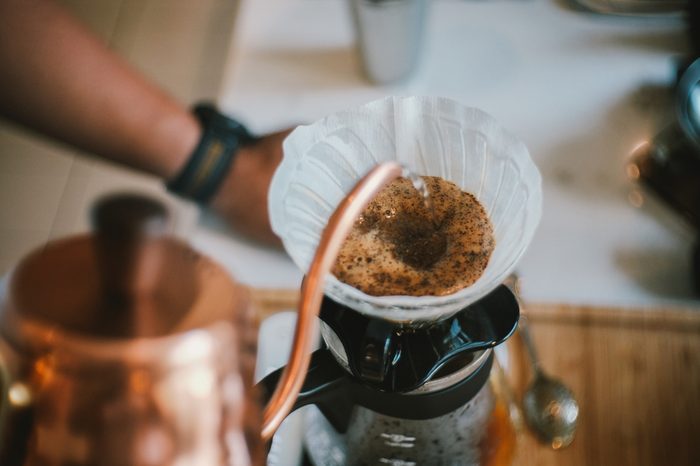
You use distilled water to avoid scale
Yes, distilled water could help prevent scale in your coffee machine, but your coffee flavor will suffer. Easto explains that coffee needs some dissolved solids, like minerals, in order to extract properly. “Coffee made with distilled water will not taste very good,” she says. “High-end coffee shops actually filter everything out of their water and then put the perfect mix of minerals back in.”
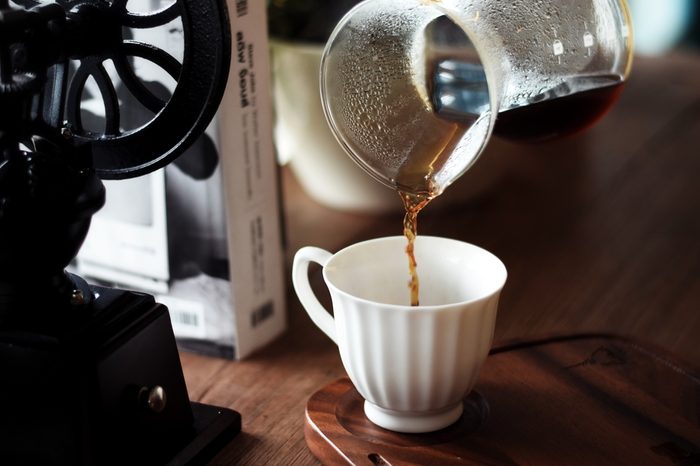
You burn your coffee with the hot plate
If you’re a slow sipper, you may be tempted to let your extra morning cups linger while you read through your Facebook messages or scroll Instagram. “While having a hot cup handy at any time sounds great, leaving the coffee pot on the hot plate for more than 30 minutes will burn your coffee,” Bodnariuc says. “All the aromas and flavors will disappear because coffee is literally still brewing on the hot plate.” Instead, make smaller batches of just two to three cups, so each cup is equally delicious. Find out the signs you may be drinking too much coffee.
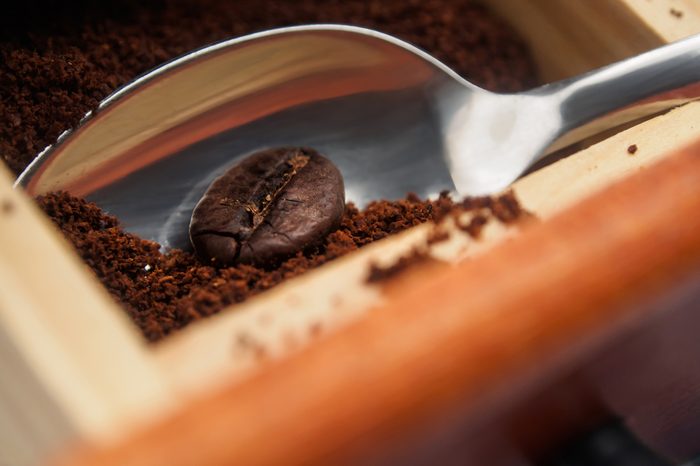
You grind beans too early
“I’m a big proponent of grinding fresh every morning,” Savoie says. “We’ve found that flavor starts to deteriorate within an hour of the beans being ground, so a fresh grind always ensures you’re getting the most of your coffee.” That’s also a reason you might want to steer clear of pre-ground coffee, Savoie says. “You have no idea how long that stuff has been sitting around since it’s been ground.”
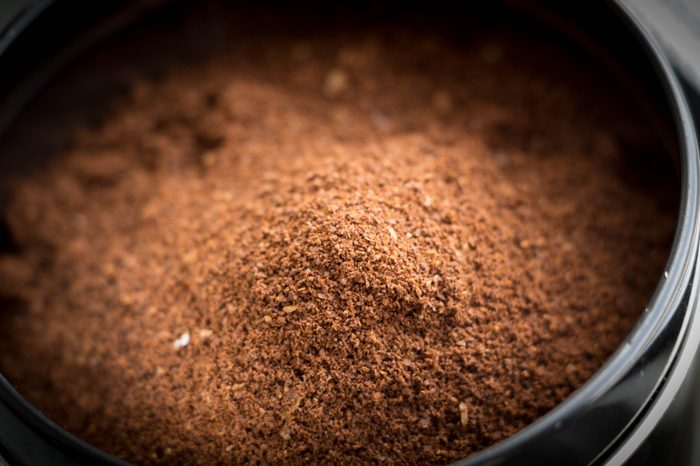
You use the wrong grind size for your brew method
There’s a size and a grind for every type of brew you’re making and using the wrong one could produce a less-than-thrilling cuppa. “If you brew in a French press or cold brewer, you need coarse-ground coffee,” Savoie says. “If you’re making espresso, you want a very fine grind.” For a drip coffee maker, Savoie says, your grind should be somewhere between those two methods. “The wrong size can clog up your machine, make a mess, and give you a wacky tasting cup of coffee,” she says.
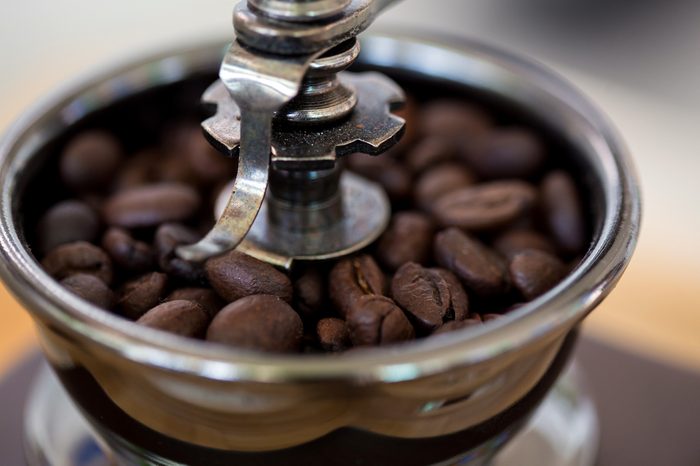
You leave beans on the counter
The temperature of your beans is important, even before you put them in the pot. “If you live somewhere really hot or keep your coffee beans on the counter in sunlight, you’re starting the process of brewing before you even grind the beans,” Savoie says. “All that heat brings the flavorful oils to the surface where they oxidize and eventually dissipate.” You can, however, safely store beans in the freezer in an airtight container. Next, find out the 10 problems all coffee-lovers understand—and how to fix them.
